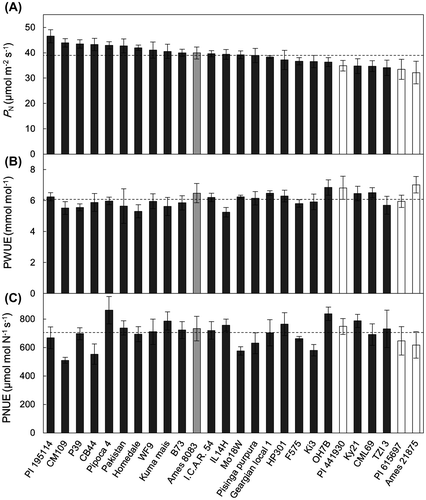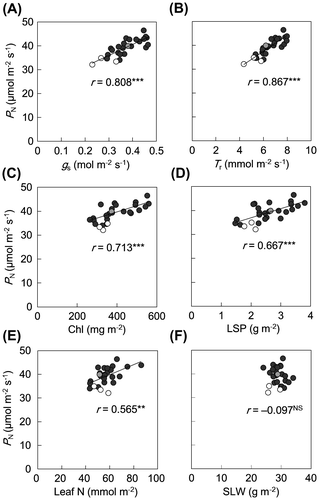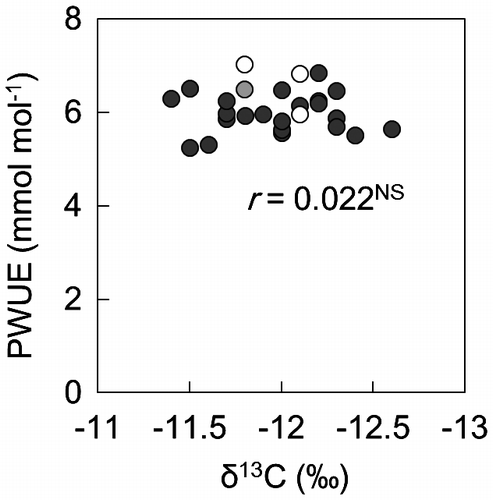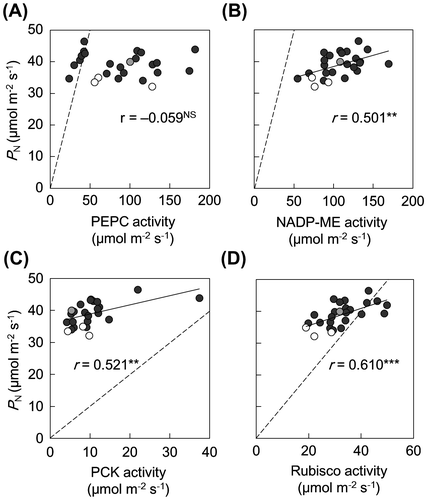Figures & data
Table 1. Maize and teosinte lines examined in this study.
Figure 1. Variations in (A) net photosynthetic rate (PN), (B) photosynthetic water use efficiency (PWUE), and (C) photosynthetic nitrogen use efficiency (PNUE) in leaves of maize and teosinte lines.

Figure 2. Relationships between PN and (A) stomatal conductance (gs), (B) transpiration rate (Tr), (C) chlorophyll (Chl) content, (D) leaf soluble protein (LSP) content, (E) leaf N content, and (F) specific leaf weight (SLW) in leaves of maize and teosinte lines.

Table 2. Correlation coefficients (r) from linear regression analysis and statistical significance of the relationships between physiological and biochemical traits in maize and teosinte lines. PN, net photosynthetic rate; gs, stomatal conductance; Tr, transpiration rate; Ci/Ca, intercellular CO2 to ambient CO2 concentration; PWUE, photosynthetic water use efficiency; LSP, leaf soluble protein; Chl, chlorophyll; SLW, specific leaf weight; PNUE, photosynthetic nitrogen use efficiency; δ13C, carbon isotope ratio; PEPC, phosphoenolpyruvate carboxylase; ME, malic enzyme; PCK, phosphoenolpyruvate carboxykinase; DC, capacity for C4 acid decarboxylation (=NADP−ME activity + PCK activity); PCK ratio, [=PCK activity/(NADP−ME activity + PCK activity)].
Figure 3. Relationship between photosynthetic water use efficiency (PWUE) and δ13C in leaves of maize and teosinte lines.

Figure 4. Relationships between PN and activities of (A) PEP carboxylase (PEPC), (B) NADP-malic enzyme (NADP-ME), (C) PEP carboxykinase (PCK), and (D) Rubisco in leaves of maize and teosinte lines.
